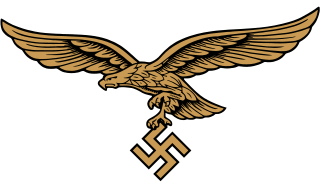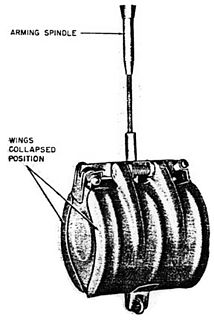
A Butterfly Bomb was a German 2 kilogram anti-personnel submunition used by the Luftwaffe during the Second World War. It was so named because the thin cylindrical metal outer shell which hinged open when the bomblet deployed gave it the superficial appearance of a large butterfly. The design was very distinctive and easy to recognise. SD 2 bomblets were not dropped individually, but were packed into containers holding between 6 and 108 submunitions e.g. the AB 23 SD 2 and AB 250-3 submunition dispensers. The SD 2 submunitions were released after the container was released from the aircraft and had burst open. Because SD 2s were always dropped in groups the discovery of one unexploded SD 2 was a reliable indication that others had been dropped nearby. This bomb type was one of the first cluster bombs ever used in combat and it proved to be a highly effective weapon. The bomb containers that carried the SD 2 bomblets and released them in the air were nicknamed the "Devil's Eggs" by Luftwaffe air and ground crew.

The SC 1000 was a large air-dropped general-purpose thin cased high explosive demolition bomb used by Germany during World War II. Weighing more than 1,000 kg (2,200 lb), it was nicknamed the Hermann by the Germans in reference to the portly Luftwaffe commander, Hermann Göring.

The AB 70-D1(Abwurfbehälter) was a cluster bomb dispenser used by the Luftwaffe during World War II.

The AB 250-2(Abwurfbehälter) was a cluster bomb used by the Luftwaffe during World War II.

The BDC 10 was a cluster bomb used by the Luftwaffe during World War II.

The SB 2500 (Spezialbombe) was a luftmine or aerial mine in English used by the Luftwaffe during World War II.

The SD 50 or thick walled explosive bomb in English was a fragmentation bomb used by the Luftwaffe during World War II.
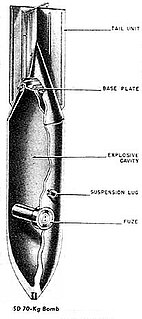
The SD 70 or thick walled explosive bomb in English was a fragmentation bomb used by the Luftwaffe during World War II.
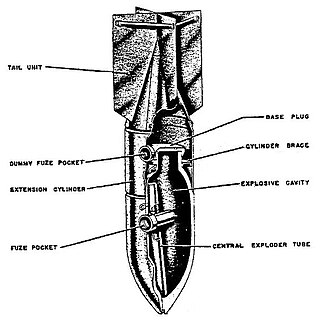
The SD 250 or thick walled explosive bomb in English was a fragmentation bomb used by the Luftwaffe during World War II.

The PD 500 or thick walled armor-piercing explosive bomb in English was a armor-piercing bomb used by the Luftwaffe during World War II.

The PC 500 or cylindrical armor-piercing explosive bomb in English was a series of armor-piercing bombs used by the Luftwaffe during World War II.

The PC 1000 or cylindrical armor-piercing explosive bomb in English was a armor-piercing bomb used by the Luftwaffe during World War II.
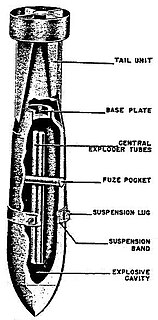
The PC 1400 or cylindrical armor-piercing explosive bomb in English was a armor-piercing bomb used by the Luftwaffe during World War II.

The PC 1600 or cylindrical armor-piercing explosive bomb in English was a armor-piercing bomb used by the Luftwaffe during World War II.

The SD 15 or thick walled explosive bomb in English was a fragmentation bomb used by the Luftwaffe during World War II.

The SBe 250 or concrete fragmentation in English was a fragmentation bomb used by the Luftwaffe during World War II.
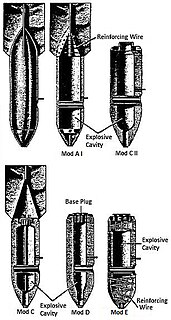
The SBe 50 or concrete fragmentation in English was a family of fragmentation bombs used by the Luftwaffe during World War II.
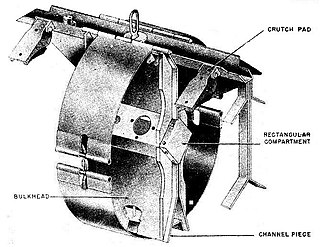
The AB 500-3A(Abwurfbehälter) was a cluster bomb used by the Luftwaffe during World War II.

The AB 500-1B(Abwurfbehälter) was a cluster bomb used by the Luftwaffe during World War II.
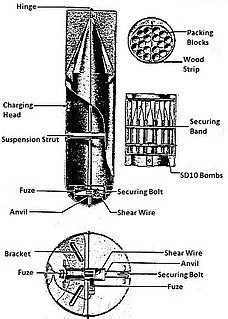
The AB 500-1(Abwurfbehälter) was a cluster bomb used by the Luftwaffe during World War II.

